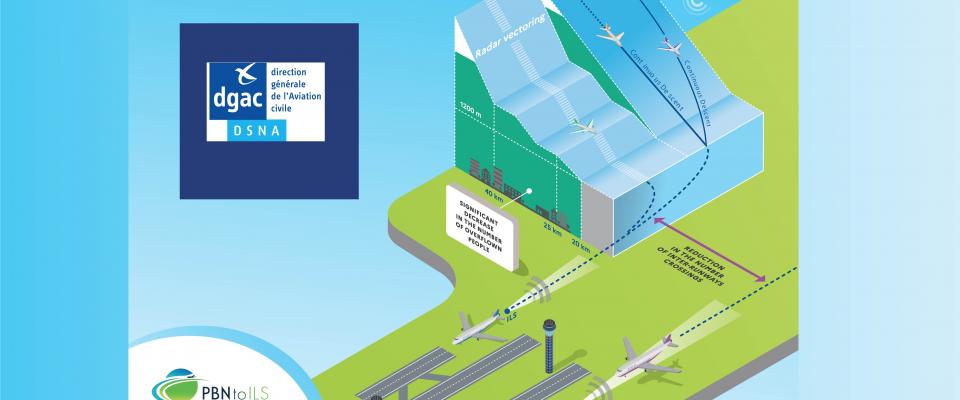Actualités :
DSNA acts at Paris-CDG for more environmentally-friendly flights

Since 18th January, 2021, at Paris-CDG airport, some 350 incoming flights facing West on theGreen aviation: Paris-CDG tests feasibility of round-the-clock Continuous Descent Operations (CDO) North runway pair (27R) have flown on performance-based navigation (PBN) via satellite-based legs with RNP 1 accuracy to reach the final axis. All airlines operating to the airport are part of the trial. A new challenge for a more environmentally-friendly air transport!
On a day-to-day basis, the DSNA and its partners are very involved at Paris-CDG in the continuous improvement of environmental actions enabling an exemplary development of the platform. This trial with real traffic aims to assess the operational and environmental efficiency of extending CDO from FL 70 (2,150 meters) all day long at Paris-CDG – a highly dense and complex airport environment. The project “PBN to ILS” is the result of experiments led through the Improved Parallel Operations SESAR solution (1), fitted to Paris-CDG Approach airspace specific constraints, as well as DSNA’s strong expertise in implementing PBN. Several simulator sessions have been performed since 2017 at EUROCONTROL’s experimental centre in Brétigny-sur-Orge to consolidate this new configuration and ensure a sufficient level of maturity.
Guillaume Blandel, COO at DSNA, said: “The configuration of Paris-CDG with two parallel runway pairs is complex. That is why this project is particularly innovative in Europe! The technical challenges of the future air traffic pattern must be validated both on board and on the ground, because implementing this new air traffic pattern will require major changes within one of the busiest airspaces in the world."
During this trial, in situ measurements are carried out to assess the noise impacts. The final outcomes of the trial are expected in June 2021 and will also be analysed in the context of SESAR 2020 environmental demonstration project ALBATROSS (2). Initial findings suggest expected benefits in terms of safety thanks to a reduction in the number of inter-runways crossings and in terms of environment thanks to the optimisation of vertical flight profiles. The ultimate purpose should be to reduce CO2 emissions and significantly noise pollution with higher but more concentrated aircraft trajectories. The implementation of this ambitious, environmental project is scheduled at the end of 2023 at Paris-CDG.
DSNA is member of FABEC, the winner of 2020 ATM Awards in the Environment category.
This press release was sourced from DSNA - France on 10-Mar-2021.
